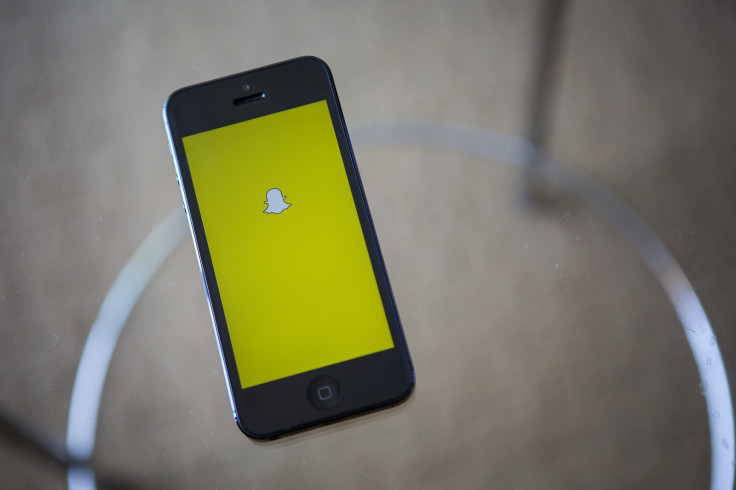Why is Snapchat worth $19bn?

When 24-year-old Evan Spiegel turned down $3bn (£2bn) from Facebook for his Snapchat picture messaging app, many thought he was crazy - but just over a year later it would seem his refusal was justified, as Snapchat is now worth a reported $19bn.
Company insiders say Snapchat is seeking a new round of funding pegged at $500m which would take its total valuation to between $16bn and $19bn - but why is it worth so much?
Firstly, the app has a huge number of very active users - more than 100 million of them actively use the app and send 700 million snaps every day. Snapchat's growth is off the charts, with viewing of photo 'Stories' - where users share a series of images with their followers for 24 hours - up from 500 million per day to one billion.
But more important is the demographic of these users, who are predominantly female (70%), and between 13 and 17 years old (50%); just 19% are over 25. As teenage users leave an ever-changing and increasingly complex Facebook, Snapchat offers a quicker, simpler and arguably more intimate alternative.
It's the real you
As an unnamed 19-year-old US teen wrote about Facebook in a Medium blog post which recently went viral, "It's dead to us".
"Facebook is something we all got in middle school because it was cool but now is seen as an awkward family dinner party we can't really leave."
Snapchat, however, "is quickly becoming the most used social media network, especially with the advent of My Story...Snapchat is where we can really be ourselves...without the constant social pressure of a follower count or Facebook friends...[Snapchat] really focuses on creating the Story of a day in your life, not some filtered/altered/handpicked highlight. It's the real you."
Adverts
Snapchat is free to download and use, but the company has begun to monetise by charging brands a reported $750,000 per day to post adverts on users' snap streams. Positioning itself as a space similar to commercial TV, Snapchat can boast of millions of users accustomed to viewing photos and videos for several seconds with very little effort.
Adverts can also be compiled into a Story, appearing in users' feeds for 24 hours and viewable as many times as they like. And, because users must press the screen to view images and videos, Snapchat and marketers can find out for how long, to the second, users are engaged with each ad.
An unnamed source told AdWeek that instead of firing dozens of cheap adverts at its users, the platform is "looking for fewer, bigger, better".
McDonalds is a brand which has recently used Snapchat, pushing its "Love is Endless" animated commercial to the platform.
But because Snapchat knows very little about its users - compared to the complete life history gathered by Facebook - it cannot offer much customisation to its advertisers. Over time, perhaps with an introduction of keywords and hashtags to user posts, Snapchat could learn about user interests and pass this valuable information along to advertisers.
Snapchat has huge potential in delivering adverts to young users - albeit with ethical issues to be ironed out - but the app's unique feature, how images sent are ephemeral and delete themselves after a few seconds, will force brands to be creative.
Another source speaking to AdWeek said: "It's very hard for marketers to get their hands around advertising that is so ephemeral."
Mobile payments
Snapchat is a partner of mobile payments company Square, allowing US users aged over 18 (admittedly not Snapchat's largest market) to send money to friends in the same way they'd share photos.
Financial details are held by Square, but once set up and paired with a user's Snapchat account, they can send payments to friends by sending a message to them containing a dollar amount; the app recognises this and offers a green payment button. Tap this and the money is sent.
Setbacks
But Snapchat's three and a half year life has not been without its setbacks. Initially the app was criticised for providing young users with a private platform for sharing explicit photos of themselves. Although images received on the app cannot be saved directly, users can easily take a screenshot of them - when this happens a alert is sent to the sender, but this does not reverse the action.
Last year, a third party app called SnapSave was hacked and tens of thousands of private images and videos were leaked online; it was estimated around 50% of these were of children aged between 13 and 17, and those who downloaded them warned that many constituted child pornography.
Snapchat quickly distanced itself from the attack, telling users not to use third-party applications.
With WhatsApp bought by Facebook for $19bn and Uber now worth north of $40bn, the industry is getting used to simple, loss-making apps commanding enormous valuations. These success stories could be signs of another tech bubble set to burst, but with investors happy to keep pumping money in, it seems set to grow for some time to come.
© Copyright IBTimes 2025. All rights reserved.






















